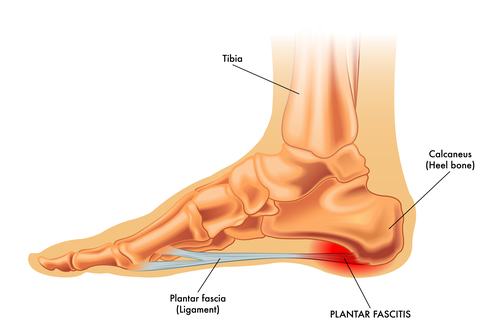“Walking is the best possible exercise. Habituate yourself to walk very far.” – Thomas Jefferson
We know today that walking is indeed one of the best forms of exercise. This is because it is one of the least impactful activities on your muscles and joints, and it is an inherently natural activity, as well. In fact, there are significant and measurable benefits that can be had by walking at least 30 minutes a day five or six days a week.
Known as weight-bearing exercise, brisk walking can accomplish the following:
- Increased muscle strength and endurance
- Reduced body fat
- Increased cardiovascular and pulmonary fitness
- Stronger bones and improved balance
- Reduced risk of heart disease and stroke
Improved management of conditions such as high blood pressure, high cholesterol, joint and muscular pain or stiffness, and type 2 diabetes
And, as if this were not enough, according to the Harvard Medical School, regular walking also counteracts the effects of weight-promoting genes, reduces the risk of developing breast cancer, and boosts immune function.
This all sounds good, you may be thinking, but walking is painful for me because of plantar fasciitis.

Dealing With Plantar Fasciitis
If you suddenly find that you’re experiencing a stabbing pain in your heel with your first steps in the morning, it is quite likely you’re suffering from plantar fasciitis, one of the most common causes of heel pain.
The Mayo Clinic describes it as involving “inflammation of a thick band of tissue that runs across the bottom of your foot and connects your heel bone to your toes (plantar fascia).”
For most sufferers, as they walk around more, the pain typically decreases, but it tends to come back after long periods of standing or getting up from sitting. While more common in runners, people who are overweight or obese, and those whose shoes have inadequate support are also likely to develop plantar fasciitis.
Common Treatment for Plantar Fasciitis
Many people try to ignore the pain or adjust their lifestyle to accommodate it. Many people also try to treat it themselves with shoe inserts and pain relievers. However, without some degree of professional help, plantar fasciitis is not likely to diminish or go away on its own. In fact, along with the common treatments offered, there may be changes in diet and lifestyle needed to bring about real relief.
Common, non-invasive treatments, include resting, icing the painful area and stretching, and over-the-counter anti-inflammatory pain relievers such as ibuprofen and naproxen sodium. Typically, patients tend to recover after several months.
Unfortunately, relief can be temporary or even elusive. That’s when therapies such as orthotics and night splints might be prescribed. Severe cases can also be treated steroid injections, extracorporeal shock wave therapy, Tenex procedure or traditional surgery. Recovery time for some of these approaches can be years and involve restricted activity and movement.
The Active Release Technique Approach to Treating Plantar Fasciitis
While there are common causes associated with plantar fasciitis, as we noted previously, another factor can be described as abnormal biomechanics in the joints of the foot, knee and or hip. Unusual, or dysfunctional joint motion in one of these areas can alter your walking gait, which can then lead to increased stress on the soft tissues of the plantar surface.
Consequently, properly treating plantar fasciitis requires a comprehensive analysis of the positions of the bones of the foot so we can develop a plan for restoring their position. In addition, there is the need for strengthening misfiring and atrophied muscles is.
Using a combination of manual therapy and a corrective exercise plan normal foot mechanics can be restored, preventing the plantar fascia from being subjected to excess force and stress. We know that Active Release Technique (ART) therapy can be an effective tool for recovering from plantar fasciitis.
ART therapy is used to locate and treat scar tissue adhesions that accumulate in the muscles and soft tissues. We can use Active Release Technique to treating plantar fasciitis through to provide disruption breakdown of the adhesions around the plantar surface. In addition, this will help increase normal tissue flexibility, movement and comfort, and restore your full balance and stability.
Active Release Technique can help with plantar facsiitis to treat plantar fasciitis with long lasting and immediate results. In addition, ART will also break the cycle that leads to continual stress injuries, while restoring strength, speed and endurance.
If you are an athlete, or are athletically active, ART can also help return your range of motion and get you back to optimal athletic performance. Like other injuries, plantar fasciitis won’t be treated without some pain. We want you to know that, when it comes to treatment through Active Release Technique therapy, there will be a certain level of pain involved.
You can be confident, however, that we closely monitor your degree of tolerance never exceed that. Our mission is to provide you with a satisfying recovery and relief from pain.
Take the Steps to Find Relief From Plantar Fasciitis
We will conduct a full examination to help us determine which form of treatment is best suited to put you on your road to recovery. Because our bodies will compensate for pain to allow us to function during our day, the pain can shift around and lead to other forms of pain. Our goal is to work through the sequence of pain and dysfunction in order to get your body healthy and working properly, and to achieve total recovery. Don’t hesitate to reach out. We are here to help and will answer any questions that you may have. You can reach us at (707) 636-4404 or by filling out our online contact form
The Role of Footwear in Preventing and Managing Plantar Fasciitis
One of the most important steps in managing and preventing plantar fasciitis is choosing supportive footwear. Shoes that lack adequate arch support, cushioning, or heel stability can increase strain on the plantar fascia, leading to or exacerbating heel pain. Look for shoes with proper arch support and shock absorption, especially if you spend long hours standing or walking. Studies have shown that individuals who wear well-cushioned and supportive shoes are significantly less likely to develop plantar fasciitis. Footwear brands with orthopedic support options or those designed specifically for plantar fasciitis can help alleviate symptoms and promote recovery. Custom orthotics are another option to consider if regular shoes don’t provide sufficient support for your unique foot shape and gait.
Foot Exercises and Stretches to Strengthen the Plantar Fascia
In addition to footwear, incorporating specific exercises and stretches can be an effective way to strengthen the plantar fascia and prevent the onset of pain. Gentle calf stretches, toe stretches, and exercises like foot rolls with a tennis ball help improve flexibility and relieve tension. A recent study found that daily foot stretches can reduce plantar fasciitis symptoms by up to 50% in just a few weeks. Other simple exercises, such as towel scrunches (grasping a towel with your toes), can help improve foot strength and maintain the flexibility of the plantar fascia, reducing the likelihood of inflammation. These exercises can be done at home and can make a significant difference, especially when combined with appropriate footwear.
Lifestyle Adjustments and Body Weight Management
For individuals who are overweight or have sedentary lifestyles, losing weight and increasing activity levels can also help reduce the strain on the plantar fascia. Excess weight places additional pressure on your feet, which can lead to chronic pain and inflammation. Research indicates that even a 5-10% reduction in body weight can lower the stress on the feet significantly, thus reducing the risk of plantar fasciitis. Maintaining a balanced, active lifestyle not only helps in managing foot health but also enhances overall wellness. Activities like swimming and cycling offer low-impact ways to stay active without putting too much stress on your feet. Together with proper footwear and strengthening exercises, a healthy lifestyle can serve as a long-term solution to prevent or manage plantar fasciitis symptoms effectively.


